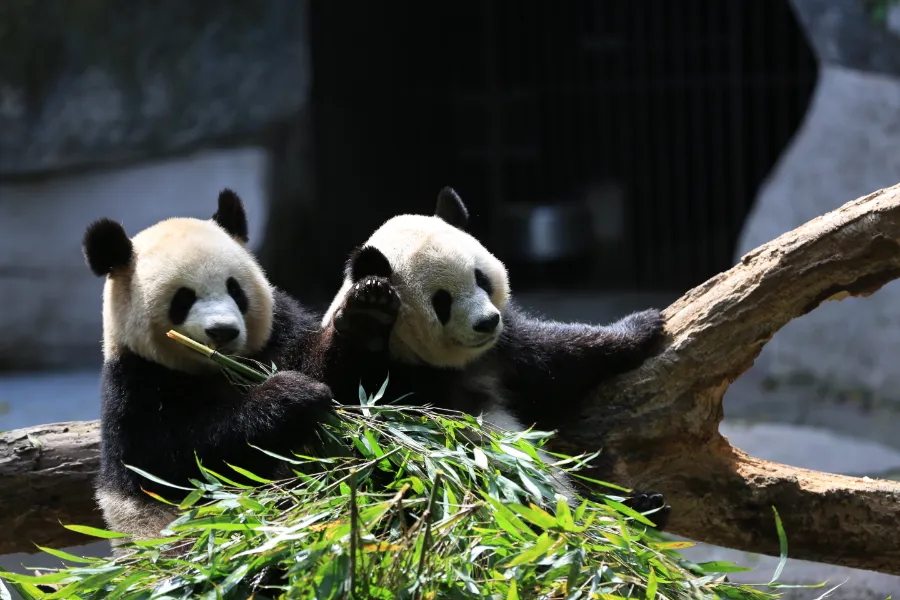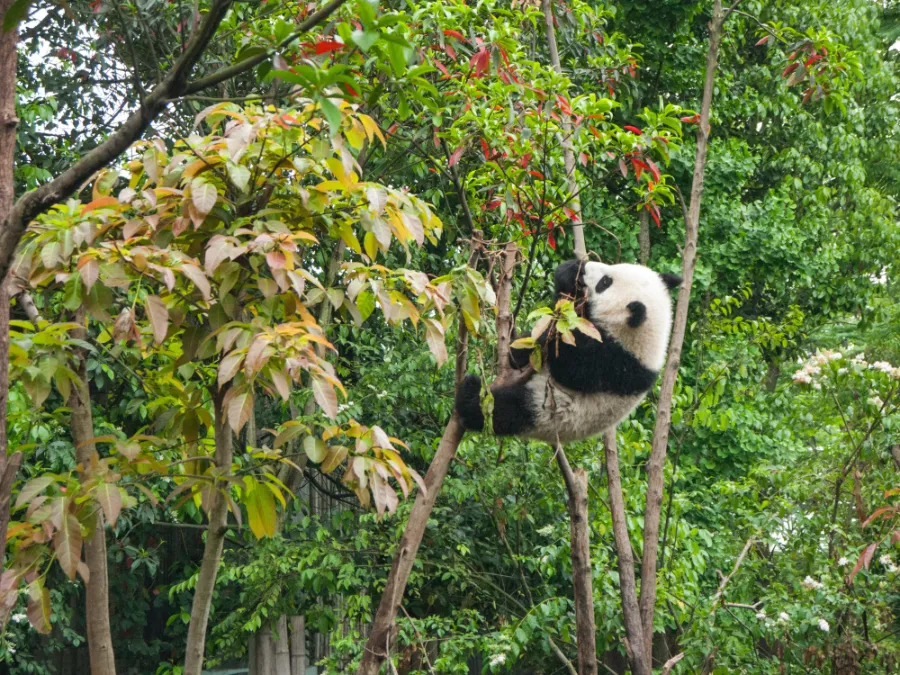
Pandas are well known for their distinctive black and white fur and their diet of bamboo, but can these herbivorous animals also eat meat? In this article, we will explore the question of whether pandas can eat meat and examine their dietary habits and preferences. We will also look at how pandas in captivity are fed and what other types of food they are able to eat.
While they are primarily herbivorous animals that survive on a diet of bamboo, pandas are capable of consuming small amounts of animal protein. However, this is not a significant part of their diet and is not necessary for their survival.
Now, let’s delve deeper into this topic and learn more about pandas and their dietary habits.
When did pandas stop eating meat?
Pandas were not always strictly herbivores. According to fossil evidence, their forefathers were omnivorous, meaning they ate both plants and animals. However, when bamboo grew more common in their environment, pandas eventually evolved to a bamboo-only diet. This nutritional transition most likely happened approximately 2-3 million years ago, and by the time contemporary pandas arose, they had evolved into specialized herbivores who survive nearly entirely on bamboo.
Why do pandas refuse to eat meat?
Pandas, contrary to common misconception, do not intentionally “refuse” to consume meat. Their digestive systems are not well suited to digesting and absorbing animal protein as herbivores, and they lack the same behavioral inclinations or natural dispositions to seek or scavenge for prey as carnivorous or omnivorous animals. Pandas have evolved to acquire the nutrients they need from bamboo, and they can extract enough protein and other nutrients from this plant to fulfill their nutritional requirements.

Do pandas in captivity eat meat?
To complement their bamboo diet, pandas in captivity are sometimes given modest quantities of animal protein, such as cooked chicken or eggs. These protein sources, however, make up a relatively minor fraction of their entire diet and are not required for life. Pandas in captivity may flourish on a diet of bamboo and bamboo-based items, and they do not need a lot of animal protein to be healthy.
Can pandas eat food other than bamboo?
Pandas may consume a range of things, including fruits, vegetables, and grains, in addition to bamboo. However, bamboo remains the mainstay of their diet, providing the bulk of the nutrients they need. Pandas may eat other foods on occasion, but they do not get as much nutritional value from them as they do from bamboo.
The role of bamboo in the panda diet
Pandas’ principal source of nourishment is bamboo, which accounts for more than 99% of their diet. Different bamboo species have different nutrient profiles, and pandas choose certain bamboo species and portions of the plant based on their nutritional requirements. Bamboo shoots, for example, are high in protein and other minerals, whereas bamboo stems are high in fiber. Pandas in the wild must consume vast amounts of bamboo to satisfy their nutritional demands because bamboo is a low-nutrient meal. Pandas have developed a number of physical and behavioral adaptations to help them obtain the most nourishment from bamboo, including powerful jaw muscles and teeth for breaking thick bamboo stems and leaves, as well as a long, muscular tongue for stripping bamboo shoots.
The nutritional value of bamboo
Bamboo is not a particularly nutrient-dense diet, thus pandas must consume a significant amount of it to satisfy their nutritional requirements. Bamboo contains less protein and calories than many other plant or animal meals, and it is poor in critical elements like vitamins and minerals. However, bamboo has several key minerals that benefit pandas’ health and well-being. Bamboo shoots, for example, are high in protein and contain a range of amino acids that are necessary for development and repair. Bamboo also includes antioxidants, polysaccharides, and other compounds that may be beneficial to one’s health.

The role of animal protein in the panda diet
Pandas get most of their nutrition from bamboo, although they have also been observed eating very little amounts of animal protein on occasion. Wild pandas may also devour other animals, such as small mammals, fish, and birds, when they are searching for bamboo to eat. Protein from these sources is not a staple in a panda’s diet but rather something eaten when available. Pandas are herbivores, not carnivores or omnivores, and their digestive processes aren’t designed to consume animal protein. Therefore, even when it is abundantly accessible, animal protein plays a limited proportion in the panda’s diet.
In conclusion
Pandas are famous for their striking black and white hair and bamboo diet, but can these herbivorous creatures consume meat? In this research, we investigated whether pandas can consume meat and looked at their nutritional patterns and preferences. We discovered that, while pandas may consume tiny amounts of animal protein, it is not a big portion of their diet. Pandas are herbivores that live mostly on bamboo, which accounts for more than 99% of their diet. They have been observed eating small animals, fish, and birds on occasion.
We also investigated how pandas in captivity are fed and what additional sorts of food they can consume. To complement their bamboo diet, pandas in captivity may be offered a diet that contains modest amounts of animal protein, such as cooked chicken or eggs. These protein sources, however, make up a relatively minor fraction of their entire diet and are not required for survival. Pandas in captivity may flourish on a diet of bamboo and bamboo-based items, and they do not require a lot of animal protein to stay healthy. Pandas may consume a range of things, including fruits, vegetables, and grains, in addition to bamboo. However, bamboo remains the mainstay of their diet, providing the majority of the nutrients they require.
We also investigated the nutritional value of bamboo and its significance in panda diet. Bamboo is not a particularly nutrient-dense diet, thus pandas must consume a significant amount of it to satisfy their nutritional requirements. While bamboo may not contain as much protein or calories as many other plant or animal diets, it does include several key elements that help pandas stay healthy. We also investigated the function of animal protein in panda food and discovered that, while pandas may take tiny amounts of animal protein on occasion, it is not a substantial portion of their diet and is not required for survival.
In conclusion, pandas are largely herbivorous creatures that live off of bamboo. While they may consume tiny amounts of animal protein, it is not a substantial portion of their diet and is not required for their health and well-being. Pandas have evolved a range of physical and behavioral adaptations to help them obtain the most nutrients from bamboo, a low-nutrient diet. Pandas in captivity may be fed a diet that includes modest amounts of animal protein, although this is not required for life, and they may flourish on a bamboo-based diet.
